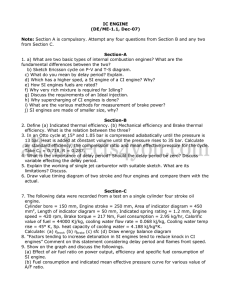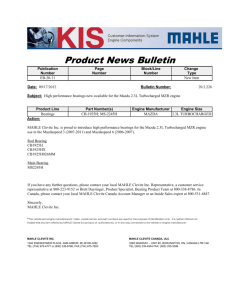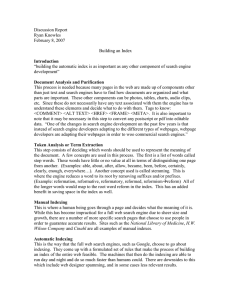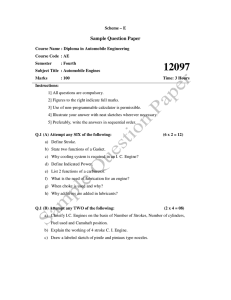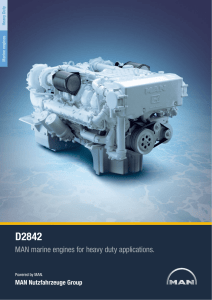Engine Downsizing - An Analysis Perspective Mark Stephenson
advertisement
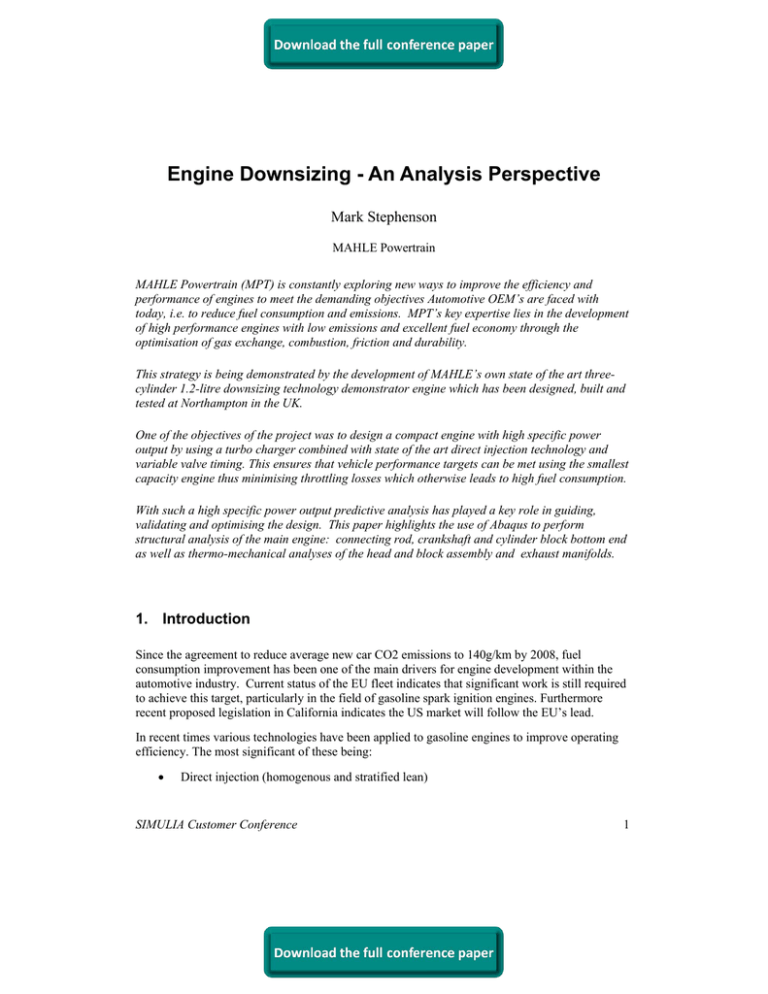
Engine Downsizing - An Analysis Perspective Mark Stephenson MAHLE Powertrain MAHLE Powertrain (MPT) is constantly exploring new ways to improve the efficiency and performance of engines to meet the demanding objectives Automotive OEM’s are faced with today, i.e. to reduce fuel consumption and emissions. MPT’s key expertise lies in the development of high performance engines with low emissions and excellent fuel economy through the optimisation of gas exchange, combustion, friction and durability. This strategy is being demonstrated by the development of MAHLE’s own state of the art threecylinder 1.2-litre downsizing technology demonstrator engine which has been designed, built and tested at Northampton in the UK. One of the objectives of the project was to design a compact engine with high specific power output by using a turbo charger combined with state of the art direct injection technology and variable valve timing. This ensures that vehicle performance targets can be met using the smallest capacity engine thus minimising throttling losses which otherwise leads to high fuel consumption. With such a high specific power output predictive analysis has played a key role in guiding, validating and optimising the design. This paper highlights the use of Abaqus to perform structural analysis of the main engine: connecting rod, crankshaft and cylinder block bottom end as well as thermo-mechanical analyses of the head and block assembly and exhaust manifolds. 1. Introduction Since the agreement to reduce average new car CO2 emissions to 140g/km by 2008, fuel consumption improvement has been one of the main drivers for engine development within the automotive industry. Current status of the EU fleet indicates that significant work is still required to achieve this target, particularly in the field of gasoline spark ignition engines. Furthermore recent proposed legislation in California indicates the US market will follow the EU’s lead. In recent times various technologies have been applied to gasoline engines to improve operating efficiency. The most significant of these being: Direct injection (homogenous and stratified lean) SIMULIA Customer Conference 1

